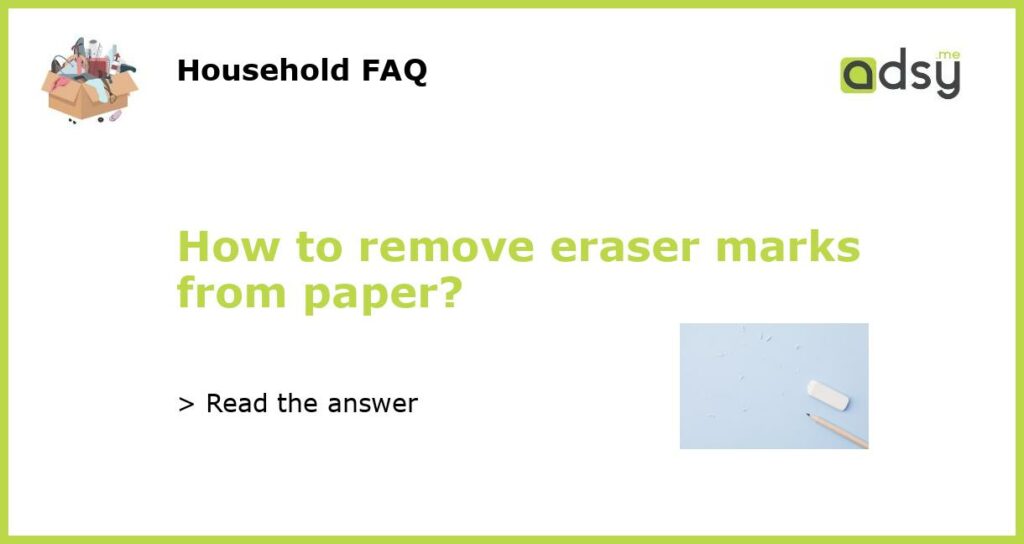Understanding Eraser Marks on Paper
Eraser marks on paper can be frustrating, especially when it comes to important documents or artwork. Whether you made a mistake while writing or drawing or accidentally smudged your work, knowing how to remove eraser marks is essential to keep your paper looking clean and professional. Before delving into the various methods of removing eraser marks, it’s important to understand the type of paper and eraser you’re dealing with. Different types of paper and erasers require different techniques, so let’s break it down.
Removing Eraser Marks from Regular Paper
Removing eraser marks from regular paper is relatively straightforward. For light pencil marks, you can simply use a clean, white eraser to gently rub the mark away in a circular motion. Be careful not to rub too hard as you could damage the paper or leave smudges. If the mark is stubborn, you can lightly moisten the tip of the eraser or use an adhesive putty (such as Blu-Tack) to gently lift the mark off the paper. Test the adhesive putty on a small, inconspicuous area of the paper first to ensure it does not leave behind any residue.
Removing Eraser Marks from Delicate or Specialty Paper
Delicate or specialty papers, such as watercolor paper or textured paper, require more care when removing eraser marks. To avoid damaging the paper, it’s recommended to use a gently dabbing or rolling motion rather than rubbing the mark. Start by using a clean, white eraser to lightly dab or roll over the mark. If the mark persists, try using a kneaded eraser, which is softer and more pliable than a regular eraser. Kneaded erasers can be shaped and manipulated to gently lift off marks without damaging the paper. Remember to press lightly and test on a small area first to ensure that the eraser does not damage or smudge the paper.
Removing Eraser Marks from Ink or Pen Marks
Removing eraser marks from ink or pen marks can be a bit trickier. If you accidentally erase over ink or pen marks, you may end up spreading the ink or smudging the paper. In this case, it’s best to try a different approach. One method is to use a clean, white eraser to gently erase the surrounding area of the mark without touching the mark itself. This can help to blend the eraser mark with the rest of the paper, making it less noticeable. Another method is to use isopropyl alcohol (also known as rubbing alcohol). Dampen a cotton swab or cloth with isopropyl alcohol and gently dab the eraser mark. Remember to test the alcohol on a small, inconspicuous area first to ensure that it does not damage or discolor the paper. This method works best on non-absorbent papers, such as glossy or coated paper.
Preventing Eraser Marks in the First Place
While knowing how to remove eraser marks is important, preventing them in the first place is even better. Here are a few tips to help prevent eraser marks on your paper:
- Use a light touch when writing or drawing to minimize the pressure applied to the paper.
- Choose a high-quality pencil or pen that is less likely to leave smudges or marks on the paper.
- Use a drafting brush or soft cloth to gently sweep away eraser debris instead of using your hand, which can inadvertently smudge the paper.
- If you are working on delicate or specialty paper, consider using a professional eraser designed specifically for that type of paper.
- Always test any eraser or cleaning method on a small, inconspicuous area of the paper first to avoid causing further damage or discoloration.
By following these tips and techniques, you can effectively remove eraser marks from paper and keep your documents or artwork looking clean and professional.






